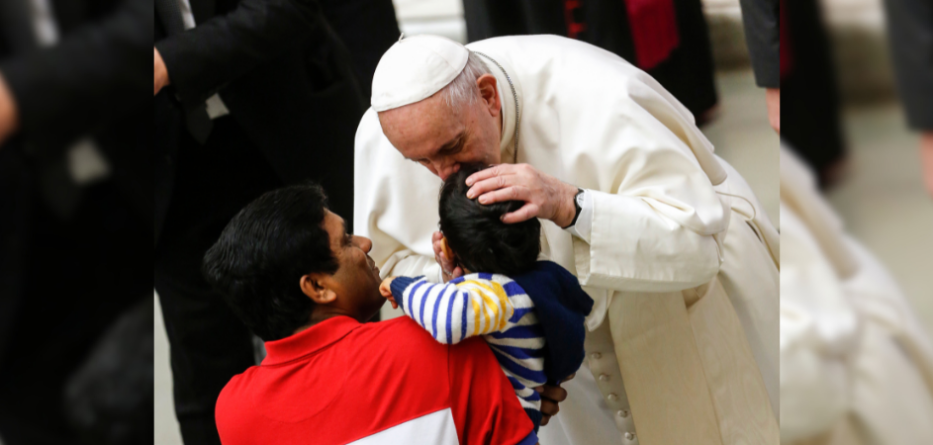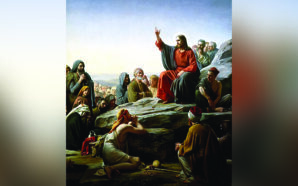The relationship between faith and reason has long been a load-bearing column of Catholic intellectual life. The idea that these two dimensions of the human spirit should converse, sustain one another, and avoid their respective temptations—fanaticism on one side, nihilism on the other—has guided theological thought for centuries. In 1998, Pope John Paul II gave the principle one of its most polished articulations in his encyclical Fides et ratio: “Faith and reason are like two wings on which the human spirit rises to the contemplation of truth.”
But this balance carries a familiar risk: that it will harden into a fixed schema, a grid, a theory that, in its attempt to hold everything together, ends up excluding life in its flesh and contradictions. John Paul himself cracked open the frame with his poetry.
Pope Francis inherited this tension—and chose to take it a step further. Where many sought a new system, an alternative theory, he shifted the center of gravity. “Reality is greater than ideas,” he wrote in Evangelii gaudium. A plain phrase, but one with subversive potential. It’s an invitation to look at the world before we look at its representations, to trust experience before formula, and, above all, to make room again for the reasons of the heart.
For Francis, the heart was the true stake of his papacy—not the heart understood as easy sentimentalism or the glorification of emotion, but as the vital center, the meeting point of thought, will, and feeling. The heart as the place of truth—lived truth, embodied and often contradictory.
Jorge Mario Bergoglio grew up in a Buenos Aires steeped in psychoanalytic culture. Freud and Lacan were part of the mental furniture. The city’s cafés buzzed with talk of trauma, the unconscious, repression. Psychoanalysis was not merely a clinical discipline, but a cultural key. Without adopting its jargon—and often pushing back against some of its more self-referential conclusions—Bergoglio absorbed something of that atmosphere: an attentiveness to inner conflict, to the complexity of the subject, and to narrative as a space for working through things. His reading of history reflects that sensibility. Think of his insistence on remembering Argentina’s dictatorship not as a wound to be quickly closed but as a trauma to be walked through in order to do justice.
Still, Freud was not Francis’s real reference point. That was St. Ignatius of Loyola. The heart of Jesuit spirituality is discernment—listening to one’s interior movements. Where do they come from? Do they lead toward life or toward death? Toward truth or toward deception? Doubt is not condemned here but welcomed as a passage. This is a way of thinking that does not glorify conflict but also refuses to ignore it. Truth, Francis suggests, does not arrive without the heart’s disturbance. Spiritual life is a kind of tango. It does not exist without passion.
Truth, Francis suggests, does not arrive without the heart’s disturbance. Spiritual life is a kind of tango. It does not exist without passion.
Francis was, in this sense, a romantic pope—standing against an Enlightenment model of fides that pairs exclusively with ratio. He urged the Church to escape the shallows by “recovering creativity and understanding ever more deeply how humanity understands itself today, in order to develop and enrich her teaching.” His appeal recalled François-René de Chateaubriand’s Génie du christianisme at the turn of the nineteenth century; it also echoed Friedrich Schlegel and those “magnificent rebels” of the Jena circle, including Francis’s beloved Friedrich Hölderlin. Francis’s romanticism was not a mood; it was a method. And it extended to gestures potent in their ability to speak directly to the heart.
Francis brought this vision into the heart of the papacy itself. He moved beyond the easy dichotomies of right and wrong, faith and doubt. He showed that human beings live in gray zones and inhabit ambivalences—and that discernment is forged precisely there. Life, after all, “is not a monochrome painting. It’s a painting in color,” as Francis said, quoting Baudelaire on Rubens. Life is fluid, in constant motion, like air in the sky and the sea within the sea. For Francis, truth was never an object to brandish but a path to walk; desire not a threat to be repressed but a force to be heard and answered.
In this sense, Francis restored to Catholic reflection a neglected element: the dynamic of desire. His reading of politics was never coldly technocratic. He knew that power works not only through institutional mechanisms, but also through the symbolic, the affective, and the collective subconscious. Religion, in his view, is a living, popular response to deep human needs for meaning, protection, and belonging. Populisms, nationalisms, identity ideologies—he saw these not merely in ideological terms but as symptoms of disoriented, aching, and sometimes manipulated desire.
All of this finds a powerful synthesis in Dilexit nos, his final encyclical. The text does not impose a thesis, it offers an image: the heart as the crossroads of life. Here, reason, emotion, and action meet. Here, one loves, suffers, and hopes. To sever the heart from knowledge is to split the person. And Francis made the point vivid through his passion for poetry and literature. For the first time in the modern era, the poetic logos entered papal teaching not merely as a quotation or an ornament but as a form and language of magisterial texts. This is why Bergoglio loved the tragedians, like Dostoevsky, who show that rationality, if not warmed by the heart, can turn cruel—and that faith deprived of love curdles into ideology.
His critique of neoliberalism begins here. It is not just economic analysis but spiritual diagnosis. Social narcissism, competitive individualism, and the inflation of the self are symptoms of a society that has separated heart from intellect and lost the ability to feel the other and, with it, the capacity to create community. For this reason, Francis’s language is direct. It does not sugarcoat. He names structural poverty, human and technological disposability, lovelessness toward those who are different, and war. Yet he avoids the trap of moralism. He does not pin guilt on the individual, as one commentator recently misread him. Rather, he invites an adult assumption of responsibility. “Who am I to judge?” he once said—not to relativize, but to free moral sense from the obsession with judgment. He was the pope of Evangelii gaudium, Gaudete et exsultate, Amoris laetitia, and of the joie de vivre—of embraces, unfeigned smiles, and the desborde (“overflow”) of life and grace.
The key is discernment—beginning from a heart that feels, questions, vibrates. In a preface to YOUCAT Love Forever, Francis wrote of the “erotic charm and attraction” that can exist in the tango, where the dancers “court each other, live in proximity and distance, sensuality, attention, discipline, and dignity.”
Francis’s thinking never calcified into a catechism of bullet points. Rather than denying intellectual and spiritual tensions, he inhabited them. He was unafraid of complexity; in fact, he sought it out. He preferred not “balance” but the harmony of “polar oppositions,” in a line of intuition that joins St. Basil to Romano Guardini.
The polyhedron, one of Francis’s recurring images, symbolizes this inner vision: emotions, fragilities, doubts, and desires all have their place. We possess not only faith and reason, but what he calls “open thought,” which neither closes nor severs but opens and connects. In fact, as Francis once clarified, what he wanted was intentionally “incomplete thought”—not simplifying or prematurely foreclosing but continually responding and adapting. This is a thinking with the heart at its center, out of fidelity to the living flesh of the human being.
Might this not be one of Francis’s most enduring legacies—that romantic approach, so urgent and necessary in our world stripped of destinations, ideals, and dreams?
Reproduced with permission by Commonweal.








